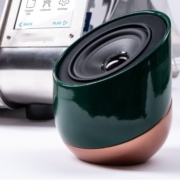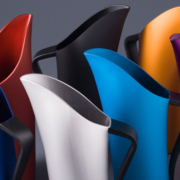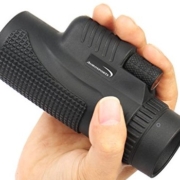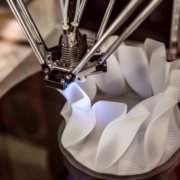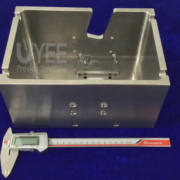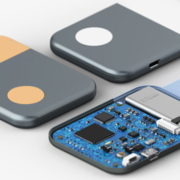The Contact of Prototype Manufacturing in Medical Industry
Apart from printing 3D models, industrial rapid prototypes and other models for different industries, additive manufacturing has evolved substantially in medical industry. Because this technique offers personalized solutions, it has a great impact on health. If you want to know some of these advances, we show you the most interesting medical device prototyping innovations with 3D technology.
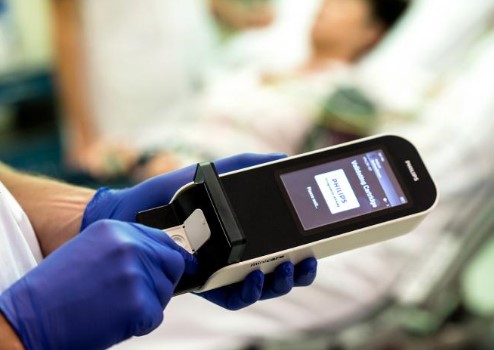
Some Advances in 3D Printing for Modern Medical Industry
Since its inception, the ease of printing 3D models and other designs has found a fertile field in medical device to give less expensive and more efficient alternative treatments. With the development of materials, technologies and techniques, many people can now turn to medical device innovations with 3D technology such as:
-
3D printing and biological materials.
Progress in this area is unstoppable. From blood vessels to connective tissue to skin printing, the usefulness and expansion of this innovative technology in the medical field is enormous. Hearing aids, prostheses, bones and even ears can already be produced with 3D printers.
-
Uses in optogenetics.
This cutting-edge technique is used to stimulate groups of neurons in the brain. Genetics, virology and optical study are mixed in this scientific and experimental branch. Great advances are being made in this regard by treating neurodegenerative diseases such as Alzheimer’s and it is proven to be really effective against disorders and ailments such as insomnia or anxiety. Light is the protagonist of this innovative medical technique functioning as an inducing agent. You can learn more about this technique in the following link.
-
Hybrid operating rooms.
Hybrid or smart operating rooms are often equipped with sufficient technology to perform diagnosis and intervention. High-quality images, intraoperative tomography, and MRIs are present in the same room, thus optimizing the operating process. The use of these operating rooms minimizes the risks of patients, who are normally transferred between different rooms, makes it possible to diagnose and intervene at the same time, it is less invasive and it allows patients to recover faster, spending less time in the hospital.
-
Customized drugs.
There are many patients who need a large amount of medical device to cope with their ailments. Since standardized doses do not work the same for everyone, 3D drug delivery appeared. Dr. Min Pu and his team developed an algorithm that analyzes the person’s data to create the precise dosage and print it out using special software.
-
Preparation and 3D training.
Faced with the challenge of doing very specific or complicated operations, the study of the human body has had to evolve. Using MRIs and CT scans, surgeons can create high-resolution 2D and 3D images. With the help of virtual reality programs, they prepare their procedures with more precision and detail.
-
Use of microchips in clinical trials.
Research in medical industry is being accelerated thanks to pieces that are no more than a thumb but are of enormous utility. The so-called microfluidic chips, in addition to speeding up research, reduce the use of research animals.Its function is the movement of microscopic amounts of chemical elements through cell cultures of lungs, livers, kidneys or hearts. These technological innovations in health make it possible to test combinations of active principles on a wide variety of cell types and study the relationships produced.It is a very efficient method and one that optimizes research. By selecting stem cells from the patient, the specific effects of drugs can be observed without side effects or useless treatments.
-
Wearable technology in the medical
The improvement in the relationship between the professional and the patient and the acceleration of diagnostic times are some of the advantages of the use of wearables. That is, garments or accessories with built-in devices that collect and transmit relevant information. Some examples of technological innovations in the form of wearable are the following.
-
Smart clothing to monitor body data.
T-shirts, gloves, helmets or bracelets can become information collection systems of a cardiovascular nature, for example, vital for the analysis and monitoring of patients. Monitoring stress or anxiety in users allows to detect, control and diagnose in a much more effective way. Another example is the bras that help detect breast cancer.
-
Smart glasses.
Numerous brands are producing their own version of this technology. Perhaps the best known are the Google Glasses. The uses of this type of technology are very varied, they can be used both to visualize data, as in the case of professionals, and to help you fall asleep, in the case of glasses from the company Sana Heatlh. There are also projects for smart lenses that prevent glaucoma.
-
Digital pickups.
Also known as the e-pill, it is a possible technological revolution in the medical industry. It consists of an edible sensor that controls the presence of the pill in the body through a receptor patch. The information is sent to a mobile app and the implementation of this system can lead to significant structural health savings.

